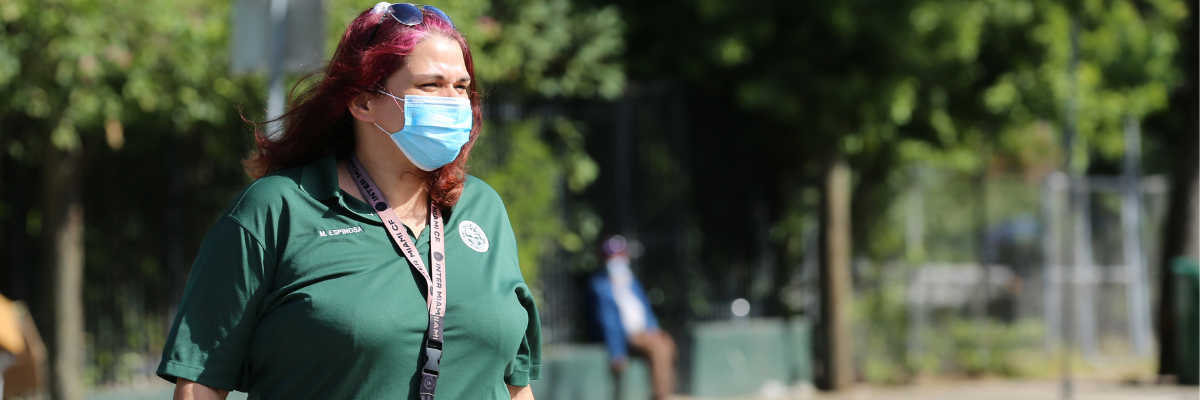Maxie Espinosa is part of the City of Miami’s Homeless Outreach team. Five days a week you will find her out on the streets in a green polo shirt with a clip board and walkie-talkie in tow. The polo has earned her and her coworkers the moniker Greenshirts. They work to connect those living on the street with crucial services and housing. Outreach workers are an important access point for those experiencing homelessness in Miami.
But what exactly do Greenshirts do? We asked Maxie to talk about the responsibilities and challenges of her job, and her role in helping end homelessness in Miami.
How did you become a homeless outreach worker?
I actually didn’t even know this was a job, and when I saw it I was like, “I have a chance to reach out to people who need my help.” Before working in outreach, I was with the City Attorney’s Office. I felt bad because some people really needed—whether their case was winnable or not—they at least needed some kind of assistance.
When I got a call about this position, I was excited because I could help people. I actually wanted to be a teacher before this. Now I get to help homeless children and their families.
What was it like to switch from law to working in outreach? Was it a big change?
It was like a complete 180. Before I didn’t really have purpose. Now I’m helping people. Even the ones I can’t help right away, I continue to work with them.
In my other job, when I talked to people, I was just trying to find out facts and not actually listening to what the person had to say. Everything would go to the attorneys. Here I’m actually listening to the person.
What is your most memorable moment on this job?
It was when I first started. In Peacock Park in Coconut Grove, there was this one lady—I went and offered her assistance and she accepted. Her sister had recently died—so she had no support, no one to help her out. She ended up being homeless and sleeping in a park. I would go out there at 6 o’clock in the morning and see her. When she finally got housing, she went up to me and she said, “Thank you so much for everything. I don’t think I would have been able to do what I did without you helping me.” That was one of the most memorable moments. I think because it was the beginning. It made me feel really good.
What are the most challenging parts of your job?
Mentally ill clients—it’s really hard to get through to them without their medication. You have to work with them. Some clients will come at you angry and yelling because they’re upset at something else. But you just have to let them vent and let them know that you’re different. All my clients, I tell them, “I’m not the same. I’m not the same.” They’ll say Outreach doesn’t do anything. I tell them, “you came to the right person with me.”
Once you get them on their meds or get them to the right people that can help their situation it gets better. At first, it’s difficult because you have to figure out what assistance they need. You have to think, how can I get them to accept assistance like housing or shelter? Mostly I just talk to them and I listen. Sometimes they’ll go to someone and the person will shrug them off. They’ll get angry with that, so they hold it against everybody. You just have to continuously try. Just have a normal conversation with them. That way they don’t feel like you’re an authority figure—you’re someone trying to help.
What is something that you want people to understand about homelessness?
I just want the general public to realize we can’t force anybody to do anything. It has to be when clients are willing to do it. Give clients understanding and time and patience. Some of them aren’t in the right place to make certain decisions and we’re trying to work with them—get them the medication they need—so that they’re able to move forward. We can only keep trying. I want the general public to know, we are out there. We are talking to people on the street every day. And we’ll continue to work with clients until we can fully help them move on from being homeless.
Anything else you want people to know about your job?
Just that it’s a really difficult job, and there are people out here working daily on it. And we’re trying to do our best, but unfortunately, it’s not all on us. It relies on how much work we can get done with the person—how much progress we can make. But we are trying. We want to get to a point where the people who are homeless have services at all times. We’re trying our best to mitigate this problem and to be able to provide services to people who need it.



